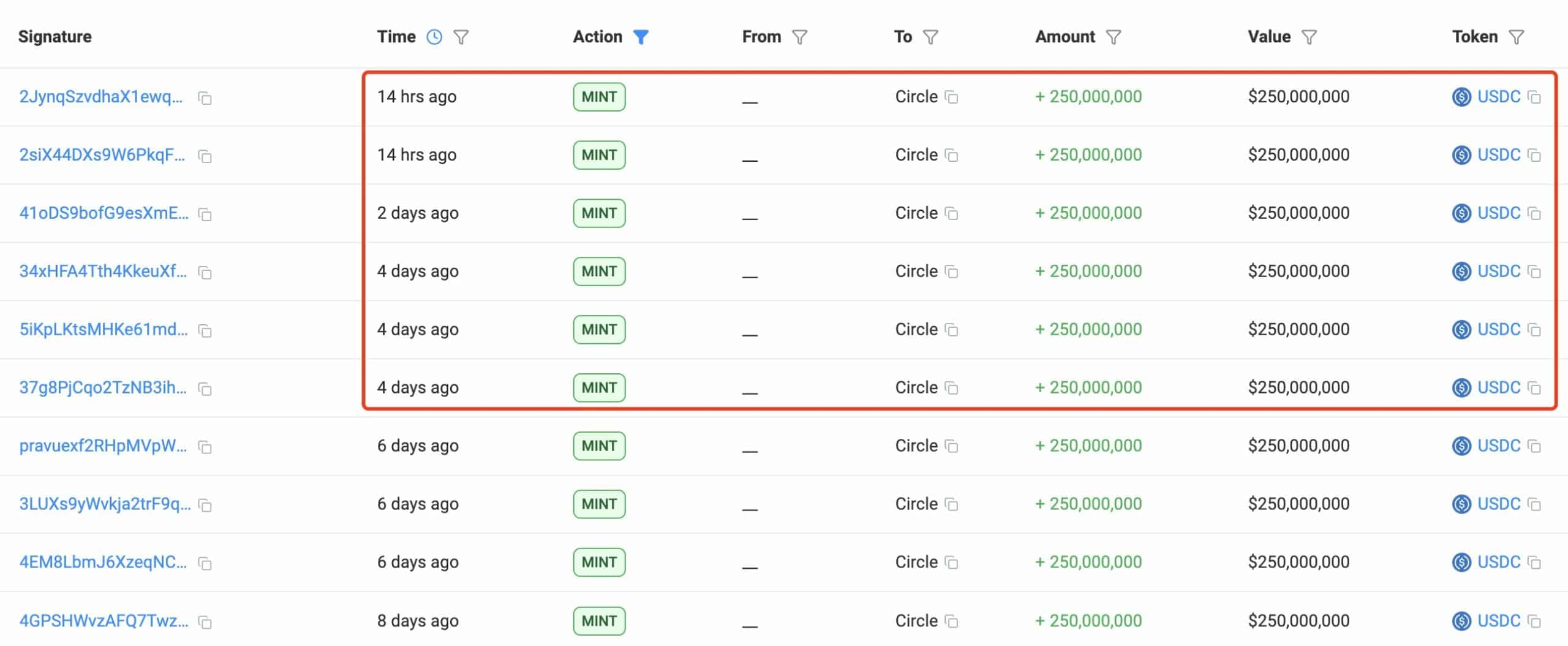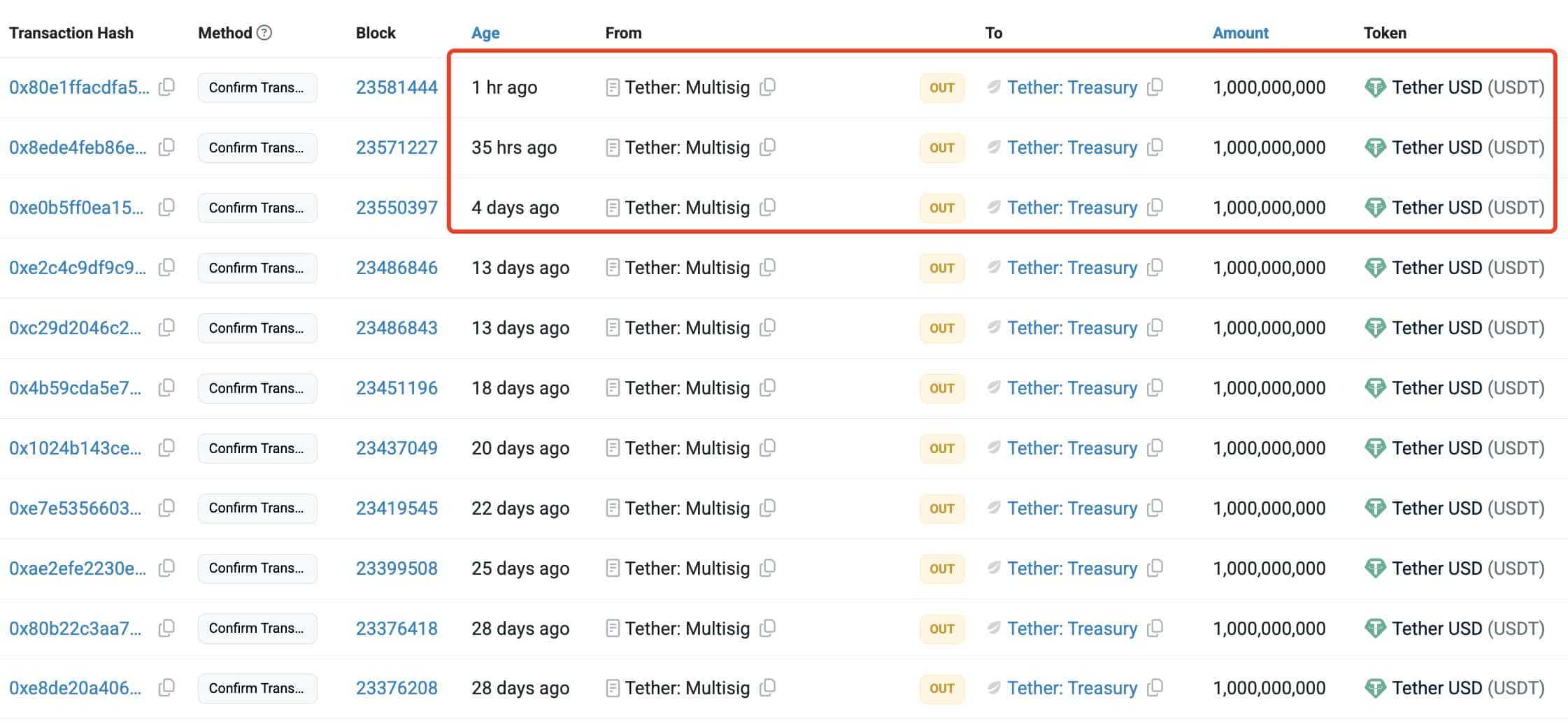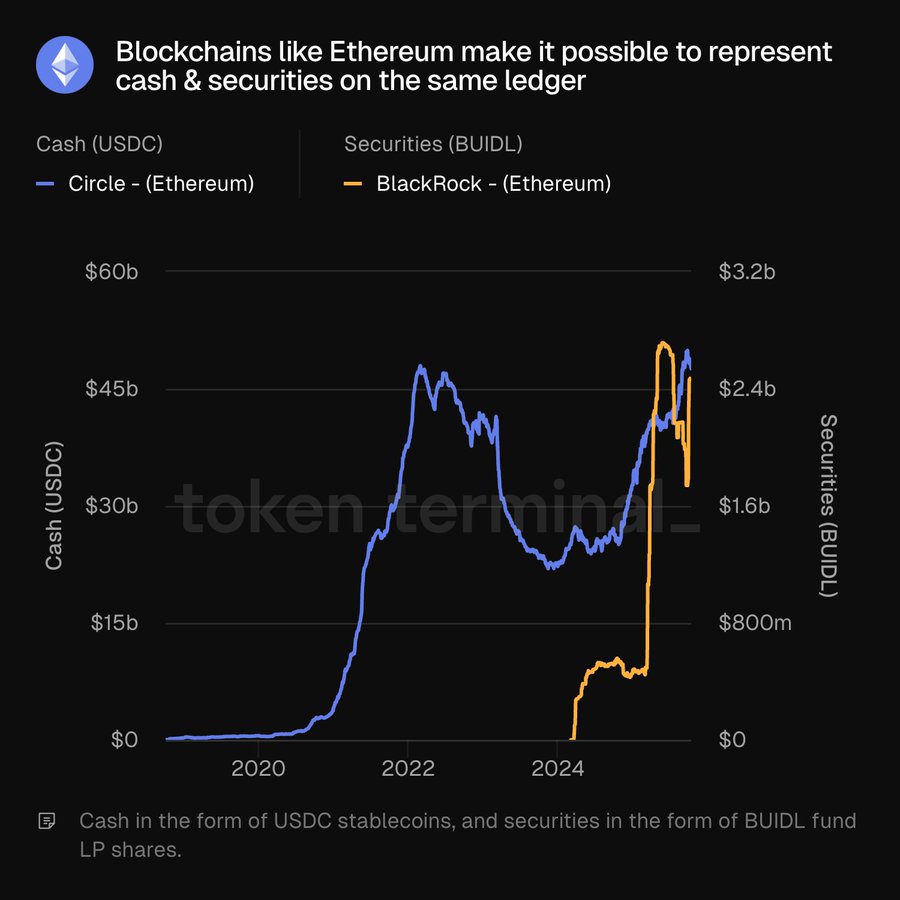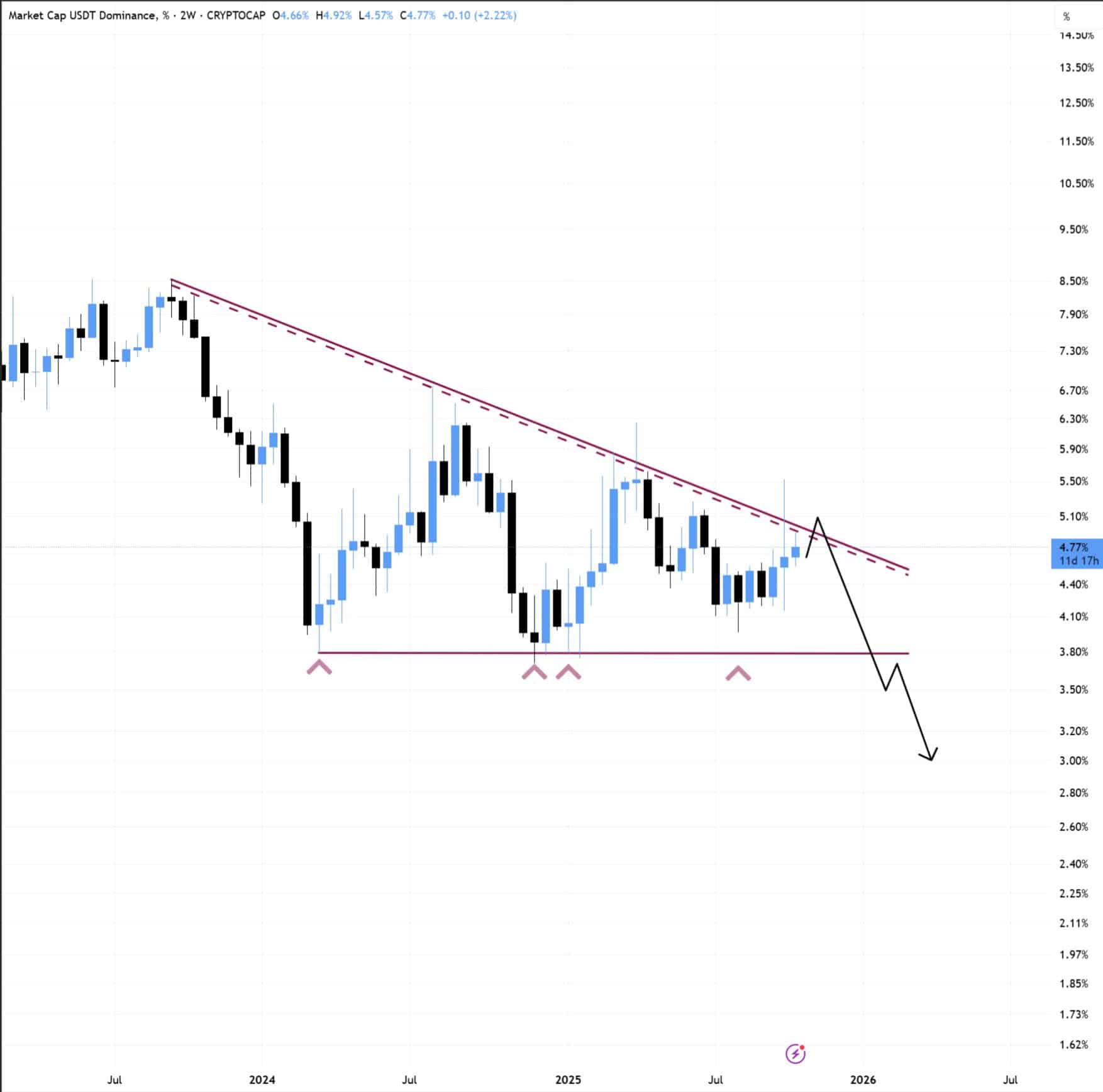| COINOTAG recommends • Exchange signup |
| 💹 Trade with pro tools |
| Fast execution, robust charts, clean risk controls. |
| 👉 Open account → |
| COINOTAG recommends • Exchange signup |
| 🚀 Smooth orders, clear control |
| Advanced order types and market depth in one view. |
| 👉 Create account → |
| COINOTAG recommends • Exchange signup |
| 📈 Clarity in volatile markets |
| Plan entries & exits, manage positions with discipline. |
| 👉 Sign up → |
| COINOTAG recommends • Exchange signup |
| ⚡ Speed, depth, reliability |
| Execute confidently when timing matters. |
| 👉 Open account → |
| COINOTAG recommends • Exchange signup |
| 🧭 A focused workflow for traders |
| Alerts, watchlists, and a repeatable process. |
| 👉 Get started → |
| COINOTAG recommends • Exchange signup |
| ✅ Data‑driven decisions |
| Focus on process—not noise. |
| 👉 Sign up → |
Tether and Circle minted $4.5 billion in stablecoins after the crash to replenish market liquidity and support trading flows; this new supply — dominated by USDT and USDC — could act as dry powder that rotates into Bitcoin and altcoins if stablecoin dominance falls further.
-
$4.5B newly minted: Tether and Circle increased stablecoin supply to inject liquidity.
-
Ethereum is acting as a dual engine for cash (USDC) and tokenized assets (BlackRock’s BUIDL), both showing notable growth.
-
On-chain data: three $1B USDT transfers and multiple $250M USDC batches; USDC supply near $45B, BUIDL > $2B.
Tether and Circle minted $4.5B in stablecoins after the crash — on-chain liquidity is rising; read how it could fuel a crypto rebound. Stay informed with COINOTAG.
Published: 2025-10-16 · Updated: 2025-10-16 · Author: COINOTAG
| COINOTAG recommends • Professional traders group |
| 💎 Join a professional trading community |
| Work with senior traders, research‑backed setups, and risk‑first frameworks. |
| 👉 Join the group → |
| COINOTAG recommends • Professional traders group |
| 📊 Transparent performance, real process |
| Spot strategies with documented months of triple‑digit runs during strong trends; futures plans use defined R:R and sizing. |
| 👉 Get access → |
| COINOTAG recommends • Professional traders group |
| 🧭 Research → Plan → Execute |
| Daily levels, watchlists, and post‑trade reviews to build consistency. |
| 👉 Join now → |
| COINOTAG recommends • Professional traders group |
| 🛡️ Risk comes first |
| Sizing methods, invalidation rules, and R‑multiples baked into every plan. |
| 👉 Start today → |
| COINOTAG recommends • Professional traders group |
| 🧠 Learn the “why” behind each trade |
| Live breakdowns, playbooks, and framework‑first education. |
| 👉 Join the group → |
| COINOTAG recommends • Professional traders group |
| 🚀 Insider • APEX • INNER CIRCLE |
| Choose the depth you need—tools, coaching, and member rooms. |
| 👉 Explore tiers → |
What happened when Tether and Circle minted $4.5 billion in stablecoins?
Tether and Circle minted $4.5 billion in stablecoins to replenish liquidity after the market sell-off. On-chain records show multiple large issuances — three $1 billion USDT transfers to Tether’s treasury and several $250 million USDC batches from Circle — increasing available dry powder for trading and potential redeployment into risk assets.
How did these issuances occur and what do on-chain records show?
On-chain transaction data indicates that Tether’s multisig executed three near-simultaneous $1 billion transfers to treasury addresses, while Circle issued multiple $250 million tranches of USDC. Public ledger scans and social posts on X corroborate timing and sizes. Coinotag analysis confirms the total new supply at approximately $4.5 billion.
| COINOTAG recommends • Exchange signup |
| 📈 Clear interface, precise orders |
| Sharp entries & exits with actionable alerts. |
| 👉 Create free account → |
| COINOTAG recommends • Exchange signup |
| 🧠 Smarter tools. Better decisions. |
| Depth analytics and risk features in one view. |
| 👉 Sign up → |
| COINOTAG recommends • Exchange signup |
| 🎯 Take control of entries & exits |
| Set alerts, define stops, execute consistently. |
| 👉 Open account → |
| COINOTAG recommends • Exchange signup |
| 🛠️ From idea to execution |
| Turn setups into plans with practical order types. |
| 👉 Join now → |
| COINOTAG recommends • Exchange signup |
| 📋 Trade your plan |
| Watchlists and routing that support focus. |
| 👉 Get started → |
| COINOTAG recommends • Exchange signup |
| 📊 Precision without the noise |
| Data‑first workflows for active traders. |
| 👉 Sign up → |

Source: X
| COINOTAG recommends • Traders club |
| ⚡ Futures with discipline |
| Defined R:R, pre‑set invalidation, execution checklists. |
| 👉 Join the club → |
| COINOTAG recommends • Traders club |
| 🎯 Spot strategies that compound |
| Momentum & accumulation frameworks managed with clear risk. |
| 👉 Get access → |
| COINOTAG recommends • Traders club |
| 🏛️ APEX tier for serious traders |
| Deep dives, analyst Q&A, and accountability sprints. |
| 👉 Explore APEX → |
| COINOTAG recommends • Traders club |
| 📈 Real‑time market structure |
| Key levels, liquidity zones, and actionable context. |
| 👉 Join now → |
| COINOTAG recommends • Traders club |
| 🔔 Smart alerts, not noise |
| Context‑rich notifications tied to plans and risk—never hype. |
| 👉 Get access → |
| COINOTAG recommends • Traders club |
| 🤝 Peer review & coaching |
| Hands‑on feedback that sharpens execution and risk control. |
| 👉 Join the club → |
Fresh liquidity in the market
Following the crash, the immediate goal of these issuances appears to be replenishing market liquidity. New stablecoin supply reduces funding friction for market makers and trading desks, enabling larger bid/ask capacity and easing order-book stress.
Coinotag’s review of on-chain flows shows that issuances fed treasury and exchange-linked addresses, which historically precedes increased trading activity as market participants redeploy capital.
Who benefits and how might this capital be used?
Primary beneficiaries include liquidity providers, centralized exchanges, and institutional desks that rely on stablecoin rails for rapid market entry and exit. If market confidence recovers, that capital typically rotates from stables into BTC and higher-beta altcoins, supporting price discovery and rallies.

| COINOTAG recommends • Exchange signup |
| 📈 Clear control for futures |
| Sizing, stops, and scenario planning tools. |
| 👉 Open futures account → |
| COINOTAG recommends • Exchange signup |
| 🧩 Structure your futures trades |
| Define entries & exits with advanced orders. |
| 👉 Sign up → |
| COINOTAG recommends • Exchange signup |
| 🛡️ Control volatility |
| Automate alerts and manage positions with discipline. |
| 👉 Get started → |
| COINOTAG recommends • Exchange signup |
| ⚙️ Execution you can rely on |
| Fast routing and meaningful depth insights. |
| 👉 Create account → |
| COINOTAG recommends • Exchange signup |
| 📒 Plan. Execute. Review. |
| Frameworks for consistent decision‑making. |
| 👉 Join now → |
| COINOTAG recommends • Exchange signup |
| 🧩 Choose clarity over complexity |
| Actionable, pro‑grade tools—no fluff. |
| 👉 Open account → |
Source: X
Ethereum’s dual engine: cash and tokenized assets
Ethereum is again central to the post-crash liquidity picture. USDC supply has rebounded toward $45 billion, while tokenized products issued on Ethereum — notably BlackRock’s BUIDL fund token representing U.S. Treasury exposure — recently surpassed $2 billion in on-chain value.1
| COINOTAG recommends • Members‑only research |
| 📌 Curated setups, clearly explained |
| Entry, invalidation, targets, and R:R defined before execution. |
| 👉 Get access → |
| COINOTAG recommends • Members‑only research |
| 🧠 Data‑led decision making |
| Technical + flow + context synthesized into actionable plans. |
| 👉 Join now → |
| COINOTAG recommends • Members‑only research |
| 🧱 Consistency over hype |
| Repeatable rules, realistic expectations, and a calmer mindset. |
| 👉 Get access → |
| COINOTAG recommends • Members‑only research |
| 🕒 Patience is an edge |
| Wait for confirmation and manage risk with checklists. |
| 👉 Join now → |
| COINOTAG recommends • Members‑only research |
| 💼 Professional mentorship |
| Guidance from seasoned traders and structured feedback loops. |
| 👉 Get access → |
| COINOTAG recommends • Members‑only research |
| 🧮 Track • Review • Improve |
| Documented PnL tracking and post‑mortems to accelerate learning. |
| 👉 Join now → |
These parallel flows show Ethereum functioning as both a settlement layer for stablecoins and a registry for tokenized traditional assets, broadening on-chain liquidity channels.

| COINOTAG recommends • Exchange signup |
| 🎯 Focus on process over noise |
| Plan trades, size positions, execute consistently. |
| 👉 Sign up → |
| COINOTAG recommends • Exchange signup |
| 🛠️ Simplify execution |
| Keep decisions clear with practical controls. |
| 👉 Get started → |
| COINOTAG recommends • Exchange signup |
| 📊 Make data your edge |
| Use depth and alerts to avoid guesswork. |
| 👉 Open account → |
| COINOTAG recommends • Exchange signup |
| 🧭 Be prepared, not reactive |
| Turn setups into rules before you trade. |
| 👉 Create account → |
| COINOTAG recommends • Exchange signup |
| ✍️ Plan first, then act |
| Entries, exits, and reviews that fit your routine. |
| 👉 Join now → |
| COINOTAG recommends • Exchange signup |
| 🧩 Consistency beats intensity |
| Small, repeatable steps win the long run. |
| 👉 Sign up → |
Source: X
Is a liquidity rotation into BTC and altcoins likely?
USDT’s market dominance has trended down over the long term, and even with new minting, dominance metrics are not guaranteed to hold. Historically, when stablecoin issuance increases but dominance weakens, some stable supply moves into risk assets as confidence and price momentum recover.
| COINOTAG recommends • Premium trading community |
| 🏛️ WAGMI CAPITAL — Premium Trading Community |
| Strategic insights, exclusive opportunities, professional support. |
| 👉 Join WAGMI CAPITAL → |
| COINOTAG recommends • Premium trading community |
| 💬 Inner Circle access |
| See members share real‑time PnL and execution notes in chat. |
| 👉 Apply for Inner Circle → |
| COINOTAG recommends • Premium trading community |
| 🧩 Turn theses into trades |
| Reusable templates for entries, risk, and review—end to end. |
| 👉 Join the club → |
| COINOTAG recommends • Premium trading community |
| 💡 Long‑term mindset |
| Patience and discipline over noise; a process that compounds. |
| 👉 Get started → |
| COINOTAG recommends • Premium trading community |
| 📚 Education + execution |
| Courses, playbooks, and live market walkthroughs—learn by doing. |
| 👉 Get access → |
| COINOTAG recommends • Premium trading community |
| 🔒 Members‑only research drops |
| Curated analyses and private briefings—quality over quantity. |
| 👉 Join WAGMI CAPITAL → |
If dominance continues to fall, the newly minted $4.5 billion could flow into Bitcoin and altcoins, supporting a relief rally. That outcome depends on market sentiment, macro factors, and the pace at which issuers distribute supply to trading venues.

| COINOTAG recommends • Exchange signup |
| 🧱 Execute with discipline |
| Watchlists, alerts, and flexible order control. |
| 👉 Sign up → |
| COINOTAG recommends • Exchange signup |
| 🧩 Keep your strategy simple |
| Clear rules and repeatable steps. |
| 👉 Open account → |
| COINOTAG recommends • Exchange signup |
| 🧠 Stay objective |
| Let data—not emotion—drive actions. |
| 👉 Get started → |
| COINOTAG recommends • Exchange signup |
| ⏱️ Trade when it makes sense |
| Your plan sets the timing—not the feed. |
| 👉 Join now → |
| COINOTAG recommends • Exchange signup |
| 🌿 A calm plan for busy markets |
| Set size and stops first, then execute. |
| 👉 Create account → |
| COINOTAG recommends • Exchange signup |
| 🧱 Your framework. Your rules. |
| Design entries/exits that fit your routine. |
| 👉 Sign up → |
Source: X
Frequently Asked Questions
Why did Tether and Circle mint $4.5 billion after the market crash?
They increased supply to restore liquidity and meet exchange and institutional demand. On-chain records show issuances routed to treasury and exchange addresses, which eases trading capacity and stabilizes markets in the short term.
Will the new stablecoin supply immediately push Bitcoin higher?
Not immediately. Fresh stablecoin supply provides the capacity for buying, but actual price impact depends on deployment speed, trader risk appetite, and macro conditions. If inflows shift from stables to BTC, upward price pressure can follow.
Key Takeaways
- $4.5B minted: Tether and Circle added significant stablecoin supply after the crash.
- Ethereum’s role: USDC recovery and tokenized assets (BUIDL) show Ethereum as both cash and securities rail.
- Potential rotation: If stablecoin dominance continues to decline, capital may rotate into BTC and altcoins — creating conditions for a relief rally.
Conclusion
COINOTAG’s on-chain review shows that Tether and Circle minted $4.5 billion in stablecoins to reintroduce liquidity after a steep market decline. Ethereum continues to host both cash (USDC) and tokenized assets, expanding on-chain liquidity channels. Watch dominance and exchange flows closely — if stablecoin supply moves into risk assets, Bitcoin and altcoins could see renewed buying pressure. For ongoing tracking, Coinotag will monitor ledger flows and market responses.
| COINOTAG recommends • Members‑only research |
| 📌 Curated setups, clearly explained |
| Entry, invalidation, targets, and R:R defined before execution. |
| 👉 Get access → |
| COINOTAG recommends • Members‑only research |
| 🧠 Data‑led decision making |
| Technical + flow + context synthesized into actionable plans. |
| 👉 Join now → |
| COINOTAG recommends • Members‑only research |
| 🧱 Consistency over hype |
| Repeatable rules, realistic expectations, and a calmer mindset. |
| 👉 Get access → |
| COINOTAG recommends • Members‑only research |
| 🕒 Patience is an edge |
| Wait for confirmation and manage risk with checklists. |
| 👉 Join now → |
| COINOTAG recommends • Members‑only research |
| 💼 Professional mentorship |
| Guidance from seasoned traders and structured feedback loops. |
| 👉 Get access → |
| COINOTAG recommends • Members‑only research |
| 🧮 Track • Review • Improve |
| Documented PnL tracking and post‑mortems to accelerate learning. |
| 👉 Join now → |











